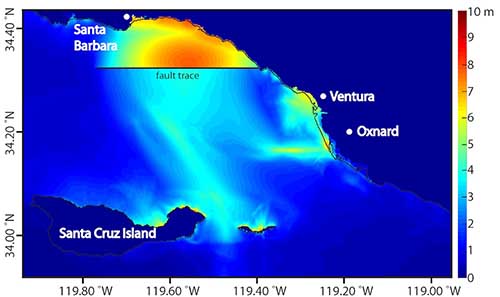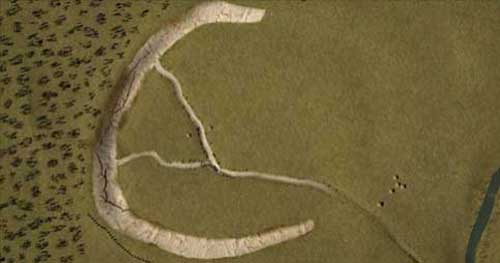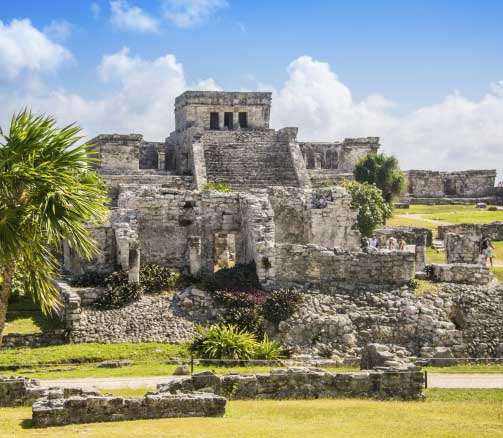15 Pictures of Women at Work for Labor Day
National Geographic - September 7, 2015
The U.S. holiday Labor Day - marked on the first Monday of September - was born out of the tumultuous 19th century American Labor movement. Industrialization led to many workers grinding through 12-hour days in unsafe conditions. Strikes and protests were common. At its founding in the 1880s, Labor Day was intended to be a 'working man's holiday.'
On Labor Day, many people look at job and career and wonder ... what if ... reflecting on past, present and future. The average person will change jobs and possibly careers several times during their working years. Burnout will come and go and yet people move forward. Many will take jobs based on the future ... meaning retirement. They mark off the passing years to that end and generally find satisfaction with activities outside of work rather than the dramas within the work situation. We have learned that the best of retirement plans can be worthless depending on the markets and economy in general, but we do the best we can and always move forward with the notion that things will get better - it's called hope. Each September many people change jobs, locations, educational platforms and more as if opening to a new cycle that will guide them forward.
It would seem that many Americans are relaxing from their daily routines this weekend and looking for spiritual purpose. I am getting email from people who are new to our realms asking questions - and thinking about things - you and I did decades ago. They want to understand and be quickly guided as they sense something they cannot define that pushes them on.
Here in the city, we're having a heat wave but people are enjoying being out and about. Friday returns us to 9/11. I plan to visit One World Trade Center in the fall when the tourists are gone and the weather is cooler. My goal is to go to the top and see the world from above. I am always most comfortable looking down on things - it just feels like my natural state of being vs. interacting within. Yesterday, my neighbor Joanne told me she could get me a free pass to the museum. I thanked her but have no desire to look at objects from that event.
Most people are those programmed to not miss a beat ... following things from their home screen as well as live in what we call the real world. Let's see what this week brings here at home and on the global front.
Obama observes Labor Day, extends contractors' paid leave AP - September 7, 2015
Showing solidarity with workers on Labor Day, President Barack Obama will sign an executive order Monday requiring paid sick leave for employees of federal contractors, including 300,000 who currently receive none. The White House wouldn't specify the cost to federal contractors to implement the executive order, which Obama was to address at a major union rally and breakfast in Boston. The Labor Department said any costs would be offset by savings that contractors would see as a result of lower attrition rates and increased worker loyalty, but produced nothing to back that up.
Is Earth as Special as We Think? National Geographic - September 7, 2015
According to recent research, if we restart the "experiment" of our solar system, seemingly insignificant early changes - like internal heat, climate, or water content - could completely reroute planetary history.
 Migrant crisis: Influx will change Germany, says Merkel BBC - September 7, 2015
Migrant crisis: Influx will change Germany, says Merkel BBC - September 7, 2015
She said Germany would speed up asylum procedures and build extra housing, having pledged to spend E6bn. But she added that Germany could not solve the crisis on its own and urged all EU states to take in refugees. About 20,000 migrants are thought to have entered Germany over the weekend and 11,000 are expected on Monday
 Syria war: France to prepare for IS air strikes BBC - September 7, 2015
Syria war: France to prepare for IS air strikes BBC - September 7, 2015
President Francois Hollande has ordered preparations to begin for air strikes on Islamic State militants in Syria. He said France would start reconnaissance flights on Tuesday with a view to launching attacks, but ruled out sending troops on the ground.
California Faces Threat of Earthquake-Triggered Tsunamis Live Science - September 7, 2015

Californians may be used to hearing about the threat of potentially deadly earthquakes, but a new study finds that quake-triggered tsunamis pose a greater risk to Southern California than previously thought. Tsunamis are monster waves that can reach more than 100 feet (30 meters) high. They are often caused by earthquakes; the 2004 Banda Aceh earthquake and tsunami killed about 250,000 people, while the 2011 Tohoku earthquake and tsunami that struck offshore of Japan killed about 20,000 people and triggered a nuclear disaster. Tsunamis increase in size as the depth of water in which they occur decreases. Since water depth is usually shallow near coastlines, tsunamis can grow as they approach land, becoming particularly dangerous along heavily populated coastlines, such as those in Southern California.
 Stonehenge researchers 'may have found largest neolithic site' BBC - September 7, 2015
Stonehenge researchers 'may have found largest neolithic site' BBC - September 7, 2015

Stone monoliths found buried near Stonehenge could have been part of the largest neolithic monument built in Britain, archaeologists believe. The 4,500-year-old stones, some measuring 15ft (4.5m) in length, were discovered under 3ft of earth at Durrington Walls "superhenge". The monument was on "an extraordinary scale" and unique, researchers said. Remote sensing and geophysical imaging technology has been used to reveal evidence of nearly 100 stones without the need for excavation. The monument is just under two miles (3km) from Stonehenge, Wiltshire, and is thought to have been a ritual site. Experts think it may have surrounded traces of springs and a dry valley leading into the River Avon.
Major Discovery: 4,500-year-old megalithic super-henge found buried one mile from Stonehenge Ancient Origins - September 7, 2015
An enormous row of 90 megalithic stones has been found buried beneath the prehistoric super-henge of Durrington Walls earthworks, only one mile from the world-famous site of Stonehenge in Wiltshire, England. The huge line of megalithic stones lies 3 feet underground and has just been discovered through the use of sophisticated radar equipment. The finding is believed to have been a huge ritual monument.
Beautiful, utilitarian stepwells of India are in danger of becoming extinct Ancient Origins - September 7, 2015
Imagine a country so dry that you have to build a 10-level stepped structure going down into the earth to get water. Such is India, where thousands of ingenious stepwells were built from the 2nd century AD through the 19th century, many financed by philanthropists, to whom the parched population were entirely grateful. This was before sophisticated technology allowed people to pump water from deep in the earth.
Six Ways Ancient Maya Still Alter the Environment Epoch Times - September 7, 2015

Activities of the Maya 2,000 years ago in Central America contributed to the decline of their environment. New research finds evidence of their influence on today's environmental conditions, as well. It's the first study to show the full extent of the "Mayacene" as a microcosm of the early Anthropocene - a period when human activity began greatly affecting environmental conditions. The researchers identified six stratigraphic markers - or "golden spikes" - that indicate a time of large-scale change, including:
"Maya clay" rocks;
unique soil sequences;
carbon isotope ratios;
widespread chemical enrichment;
building remains and landscape modifications;
signs of Maya-induced climate change.
10,000-year-old human remains found in underwater cave in Mexico shed light on ancient migrations Ancient Origins - September 7, 2015
In May last year, archaeologists made the exciting announcement that a complete Ice Age skeleton had been found in an underwater cave in Tulum, Mexico. Since then, more than eight well-preserved skeletons, ranging in age from 9,000 to 13,000 years have been retrieved from cenotes in Mexico and now scientists are beginning to unravel the secrets that they hold, remaining hopeful that the bones may eventually reveal how the Americas were first populated.
Piltdown Man: The scandal that delayed the study of human origins by decades Ancient Origins - September 7, 2015
For a long time in archaeology, and even in the popular media, there was discussion of a missing link in the archaeological/paleontological fossil record between apes and humans. In 1911, Englishman Charles Dawson made the dramatic announcement that he had found the link in the 500,000-year-old bones of the Piltdown man, dubbed Òthe first Englishman.Ó The discovery led to extensive study of Piltdown Man, and debate about its implications lasted for decades. However, in the early 1950s, following the development of scientific dating methods and the discovery of new evidence, it was proved that the Piltdown man was all just a hoax Ð it became one of the biggest scandals in archaeological history.
Volunteer black hole hunters as good as the experts PhysOrg - September 7, 2015
Trained volunteers are as good as professional astronomers at finding jets shooting from massive black holes and matching them to their host galaxies.
5 Myths About Gravitational Waves Epoch Times - September 7, 2015

1. Setbacks Are Just Due to Teething Problems
2. The Waves Come From the Early Universe
3. BICEP2 Could One Day See Gravitational Waves
4. Gravitational Waves Would Prove the Big Bang
5. We Just Need One Experiment to Detect Them
5 Things Healthy People Do Differently Epoch Times - September 7, 2015

1. They Enjoy Exercising
2. They Eat Bad Foods In Moderation
3. They Eat Healthy Snacks
4. They Drink Plenty Of Water
5. They Go To Bed Early and Are Early Risers
Winning Really Does Taste Sweet, Because Emotions Change Taste Perception Smithsonian - September 7, 2015

For athletes and fans, winning makes lots of things seem better. That includes the taste of their favorite foods, according to research demonstrating how our emotions alter taste perception.
The results come from a study of hockey fans celebrating wins or licking wounds after losses, who were then asked to rate different ice cream flavors. The scientists identified differences in how specific tastes were experienced when emotions changed, results that may hold a clue to the origins of emotional eating disorders.